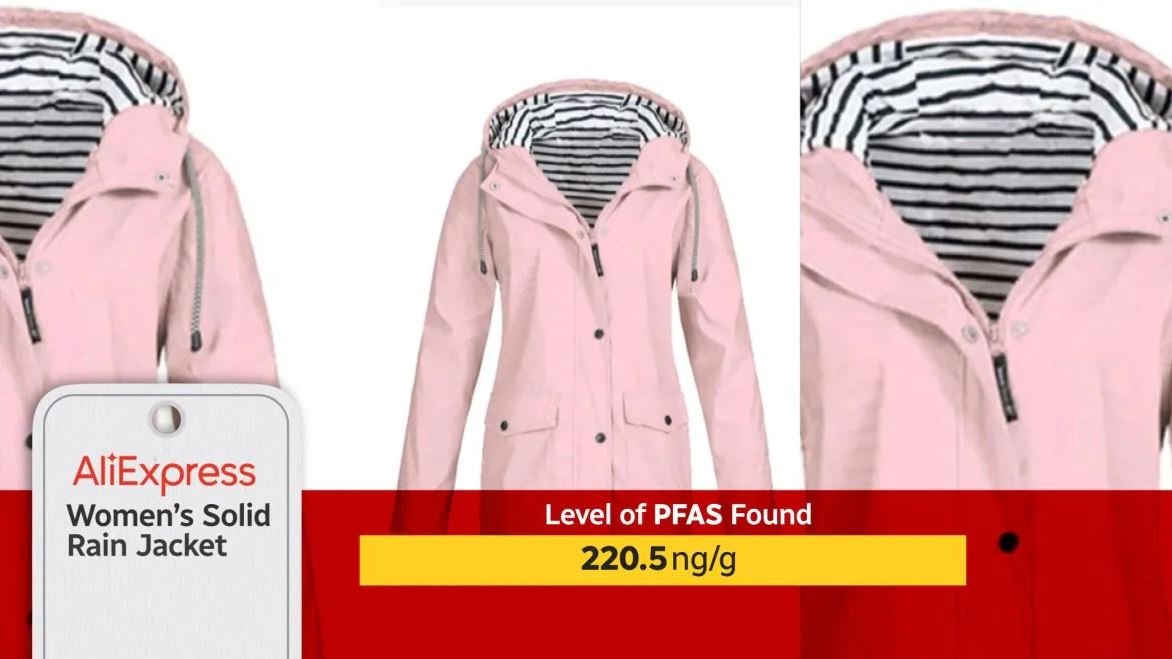Hidden Toxins in Our Clothes
Key Takeaways:
Profitability is prioritized over safety in apparel production, which poses a risk to human health and could be potentially lethal.
Garment workers bear the brunt of contamination and illness from the chemicals, as well as residents surrounding factories in third-world countries.
Unmatchable variety, hundreds and thousands of designs straight from the ramp, at a budget-friendly price: it just sounds too good to be true. So what’s really lurking behind those clothes?
In our last blog post, we’ve talked about how ultra-fast fashion brands breach health and safety regulations, human rights violations, and endanger the environment among others.
As for consumers, there’s a likelihood of contracting health-related risks as well in the long run, when wearing clothes doused in toxins.
Toxins in Our Clothes
The fast fashion and wholesale industry are two of the biggest proponents of the use of chemicals in our clothes, mainly for dyeing and treatment purposes.
However there’s a hidden cost behind the cheap price tags. CBC Marketplace joined forces with the University of Toronto to conduct an investigation behind the allegations of toxic chemicals inside our clothes. They ordered 38 samples of goods, including clothing and accessories, from 6 online-only retailers, and performed chemical tests on all of them to detect the presence of heavy metals and other harmful substances. Out of the 38 samples, 1 in 5 items had elevated levels of toxins — including lead, PFAS and phthalates — that experts found concerning.
In a surprising turn of events, they found out that 20% of the items contained substantial amounts of the elements they were testing for.
Products involved in the joint investigation by CBC Marketplace and the University of Toronto.
“People should be shocked,” said Miriam Diamond, an environmental chemist and professor at the University of Toronto, in an interview with CBC. “This is hazardous waste,” Diamond continued. “I’m alarmed because we’re buying what looks cute and fashionable on this incredibly short fashion cycle. What we’re doing today is to look [for] very short-lived enjoyment out of some articles of clothing that cost so much in terms of our future health and environmental health. That cost is not worth it.”
Lead
Shein’s products, including apparel and accessories, have been found to contain lead. The amount of lead found in Shein’s products is well beyond the contamination threshold, despite the fact that trace amounts of lead are naturally present in the environment, and may even end up on some clothes as a result of manufacturing processes.
A children’s jacket from Shein contains almost 20x the limit of lead that Health Canada set for children’s products.
To put it in perspective, Health Canada’s limit for lead in children’s products is 90mg/kg. A kid’s jacket purchased for $23 from Shein was found to contain 1702.59mg/kg of lead, which is almost 20 times the limit set by Health Canada. On the other hand, a tiny purse, also from Shein, contained 508mg/kg of lead, well over 5 times the lead threshold that is considered safe for children.
These concentrations of lead imply that the use of lead was deliberate, and not some unintended consequence of the manufacturing process. Heavy metals such as lead are mostly found in cheap textile dye pigments, as safer alternatives cost way more; and eco-friendly options aren't even part of the equation for profit-first fast-fashion companies.
Lead can be absorbed by the skin, causing damaging health effects over time, adversely affecting the brain, heart, kidneys, and the reproductive system. Pregnant women and children are the most vulnerable towards the effects of lead due to their weakened immune systems.
2. Phthalates
There were other items that were discovered to have high levels of phthalates, which is a manmade group of chemicals used to make plastic more flexible. Phthalates are known to be endocrine disruptors — causing hormonal imbalances, specifically targeting the hormones present in the male reproductive systems. Experts also say that the chemical links to major health issues such as diabetes, breast cancer, ADHD, and even developmental effects on the liver and kidneys.
Concerning levels of phthalates have been found in this transparent tote purse. While phthalates are commonly used to increase flexibility in plastic products, it’s also known to disrupt the hormonal system.
A clear tote purse, purchased from Zaful for only $13, contained concerning levels of phthalates. Same goes for children’s dresses, raincoats, and plastic bibs purchased from Shein and AliExpress. Considering children’s skin are more prone to faster absorption of chemicals, this finding was alarming, particularly with the tendency of children to suck on their clothes or put them in their mouths. Since then Shein, Zaful and AliExpress have recalled those products from their sites, and stated that they would be investigating further.
3. PFAS (Perfluoroalkyl ) aka “Forever Chemicals”
PFAS are a collection of flourinated compounds commonly used in garments for waterproofing and stain resistance, thus frequently found in workout attire, raincoats, outdoor gears etc.
Scientists consider them to be ‘forever chemicals’ , since they never break down and never get flushed out from the body; hence posing a threat to human beings and the environment. The chemicals build up in bodies over time, showing up in blood and urine, which leads to long-term health complications like diabetes, different types of cancers, hormone imbalance, liver damage, increasing obesity, and impaired immune systems. They also pollute the oceans, contaminating marine life and drinking water. Diamond noted that PFAS are “a class of chemicals that should not be used unless they are absolutely essential.”
A $13.21 Raincoat from AliExpress contains 220.5 ng/g of PFAS which is considered high; again, indicating that the use of the chemical is intentional, despite the potential consequences on human health.
Dangerously high levels of PFAS found in a pink raincoat purchased from AliExpress.
The apparel industry has relied on PFAS for water-proofing purposes for decades, and has been slow to develop more eco-friendly alternatives. As consumers expect consistent excellent performance from their favorite outerwear or sportswear brand, progress to innovate waterproof coatings is delayed.
Shein disputes the use of these toxins in their products, but they have a track record of not complying with standards in regards to their workforce.
They asserted that they were ethical, but courts in England and Australia contested that assertion after investigations revealed that they had broken various anti-slavery statutes. The main reason for this is a lack of stringent quality control regulations and oversight in China.
Therefore, any cheap clothing factory that sells its goods through Shein is not held liable for any form of poisoning that its customers might have, as product liability lawsuits are practically non-existent in China.
Ultra-fast fashion brands aside, several fast-fashion and even luxury brands have been found to sell products that contain harmful chemicals. In Greenpeace International’s 2012 report, “Toxic Threads: The Big Fashion Stitch-Up,” the organization looked into the environmental impacts of brands including Armani, Calvin Klein, H&M, Victoria's Secret, and Zara. According to the survey, an alarming amount of the garments tested included dangerous compounds such phthalates and nonylphenol ethoxylates (NPEs). 89 of the 141 pieces of clothing evaluated as part of the inquiry had azo dyes, a common treatment for textiles and leathers, which can release cancer-causing compounds, and NPEs, detergent-like molecules that have the potential to cause widespread release into aquatic habitats.
First World Gratification, Third World Grief
It’s not just the consumers that could be exposed to the ill effects of the toxins present in clothes; it’s the entire supply chain, from manufacturing to the shipping of the final product.
Due to lower labor costs in nations that often have larger rural and poor populations, countries such as China, India, Bangladesh, and Ethiopia are among those that produce the majority of the world’s clothes. The handling of fabrics treated with toxins and heavy metals is bound to make the labor sick.
Ma Jun, one of China’s leading environmentalists who told CNN in an interview in 2020, that many rivers and lakes in China were so polluted, that they were effectively dead. As a result, rivers that are not polluted by dyes and chemicals are hard to come by for the communities.
Jian River in Luoyang, in north China's Henan province, turned red from red dye that was dumped into the city's storm water pipe network in December 2011. Credit: STR/AFP/Getty Images
Ma continued: “Every season we know that the fashion industry needs to highlight new colors…each time you have a new color you’re going to use more, new kinds of chemicals and dyestuffs and pigments and catalysts,” ultimately poisoning nearby residents and workers living next to these textile and dyeing factories.
Credit: Rakib Hasan/CNN
Almost 2000 miles away from China, in central Bangladesh, the rivers surrounding the manufacturing district have run black from textile factories, causing fevers, sores and other skin irritations on residents. “People don’t have any other option so they have to … drink (from) it. They are hopeless, they don’t have money to install a filter or drill (for) deep water,” said Ridwanul Haque, chief executive of the Dhaka-based NGO Agroho that provides clean drinking water and medical care to marginalized communities.
The way brands would compromise quality and safety for profit has a lasting negative impact on our environment and personal health.
We must adjust our purchasing habits in light of mounting evidence of the consequences the chemicals have on ourselves and on the planet.
We are witnessing an uptick in the demand for more sustainable solutions, which is being driven by trends like upcycling and secondhand fashion on TikTok, and annual calls to end the buying of fast fashion on social media platforms like Twitter and Instagram.
Reusing clothes has the potential to cut down on waste generated during the manufacturing of our garments, and reduce the amount of virgin materials used. If this trend of recycling continues, it will enable us to reduce the quantity of toxic waste that is dumped into rivers across the world, leading to cleaner water for consumption, and healthier communities overall. Additionally, when clothing and textiles are reused, the number of times they have been washed lowers the amount of chemicals that dwell inside the clothes, reducing bodily exposure to these dangerous compounds.
Through years of rigorous R&D and testing, we at 4tify have come up with several sustainable treatments for fabrics, ranging from waterproofing, stain-free coatings and more! Our treatment solutions are organic, formaldehyde-free, eco-friendly, and best of all, cost and energy-saving for your business. Click here to learn more about our range of offerings or talk to us so we can recommend the best solution for your needs!







